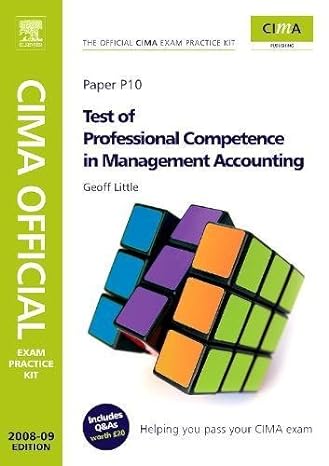Question
ABC problem Tough Thermos, Inc. manufactures two plastic thermos containers. The large container is called the Ice House. The smaller container is called the Cool
ABC problem
| Tough Thermos, Inc. manufactures two plastic thermos containers. The large container is called the Ice House. The smaller container is called the Cool Chest. The Ice House sells for $35 and the Cool Chest sells for $24. The production costs computed per unit under traditional costing for each model in 2008 were as follows.
In 2008, Tough Thermos manufactured 50,000 units of the Ice House and 20,000 units of the Cool Chest. The overhead rate of $17.08 per direct labor hour was determined by dividing total expected manufacturing overhead of $854,000 by the total direct labor hours (50,000) for the 2 models. Under traditional costing, the gross profit on the two containers was: Ice House $3.84 or ($35 $31.16), and Cool Chest $4.46 or ($24 $19.54). Because of this difference, management is considering phasing out the Ice House model and increasing production of the Cool Chest Model. Before finalizing its decision, management asks the controller Sven Meza to prepare a product costing analysis using activity-based costing (ABC). Meza accumulates the following information about overhead for the year ended December 31, 2008.
The cost drivers used for each product were:
|
1. Assign the total 2008 manufacturing overhead to the two products using activity based costing. Show calculations. 2. What was the total cost per unit and the gross profit per unit of each moel using ABC costing? Show calculations. 3. Are managment's future plans for the two models sound?
Step by Step Solution
There are 3 Steps involved in it
Step: 1

Get Instant Access to Expert-Tailored Solutions
See step-by-step solutions with expert insights and AI powered tools for academic success
Step: 2

Step: 3

Ace Your Homework with AI
Get the answers you need in no time with our AI-driven, step-by-step assistance
Get Started


